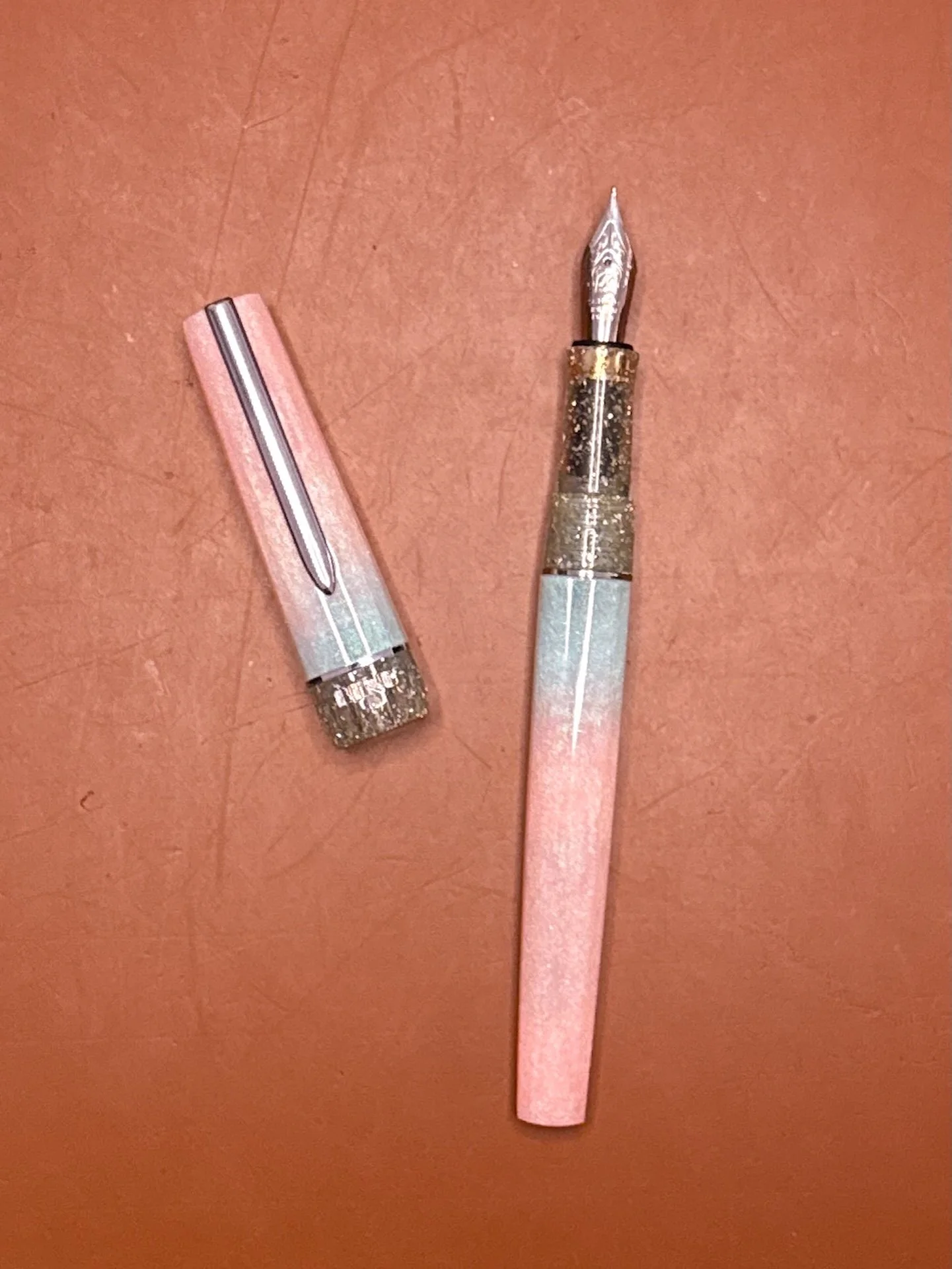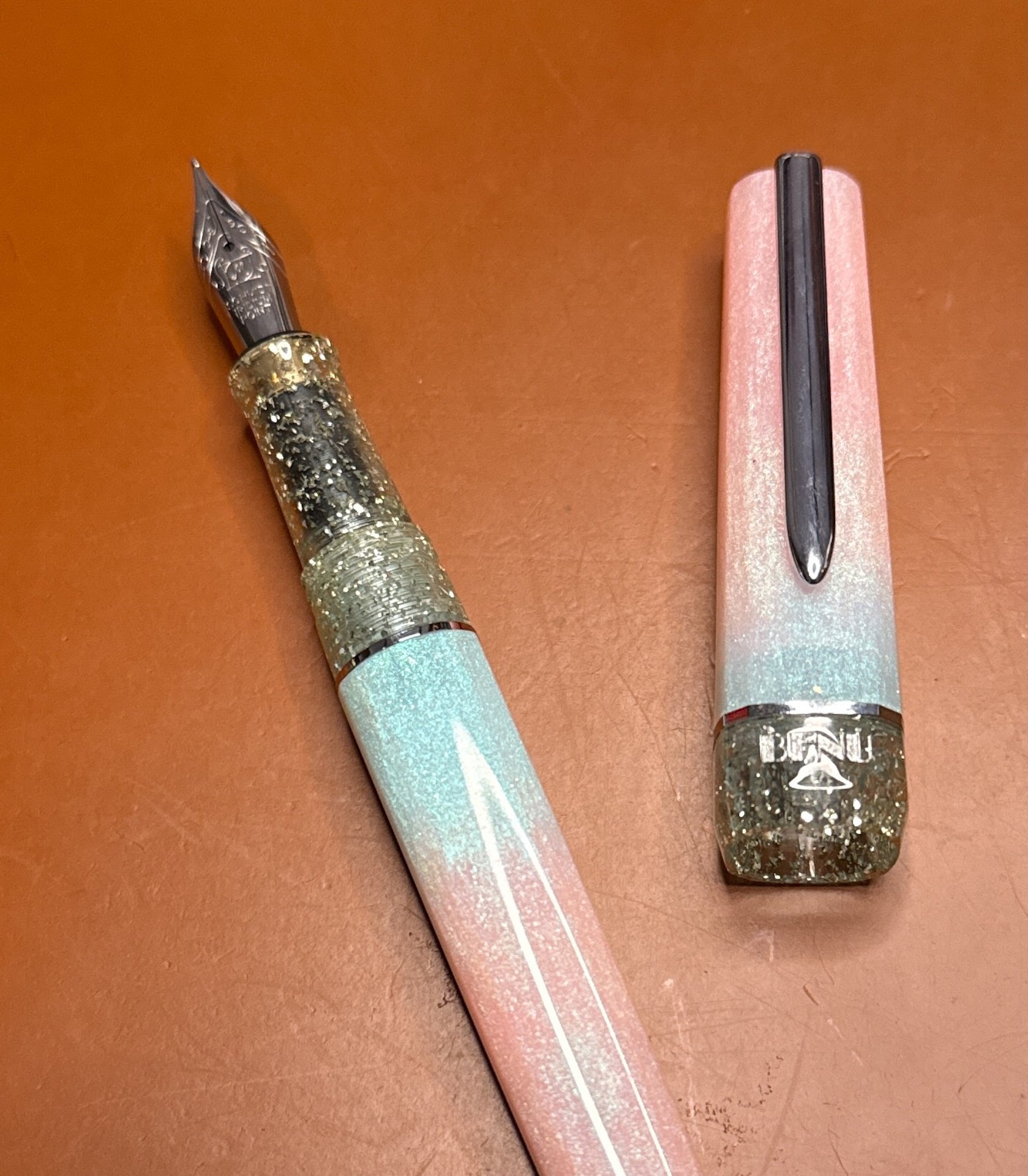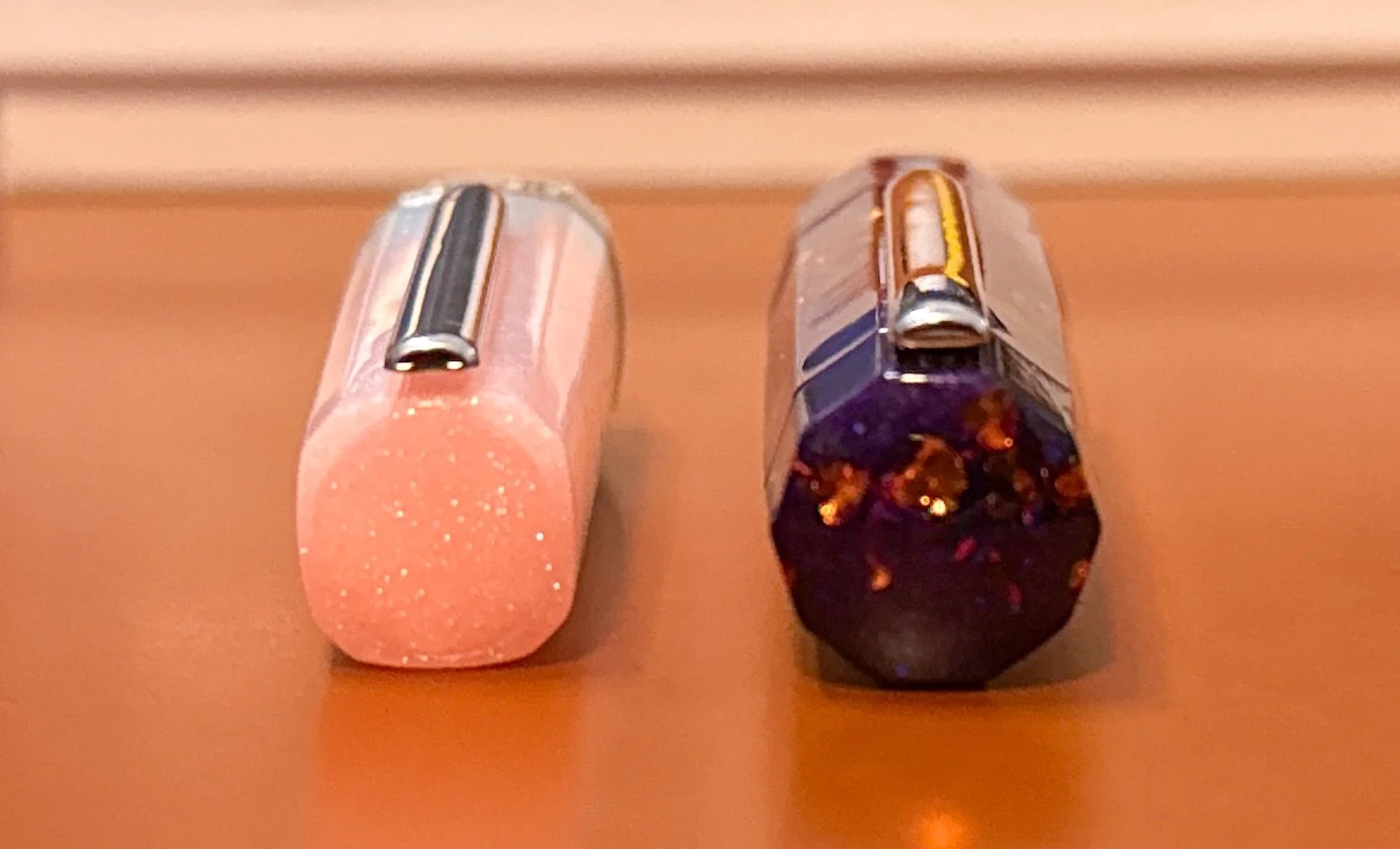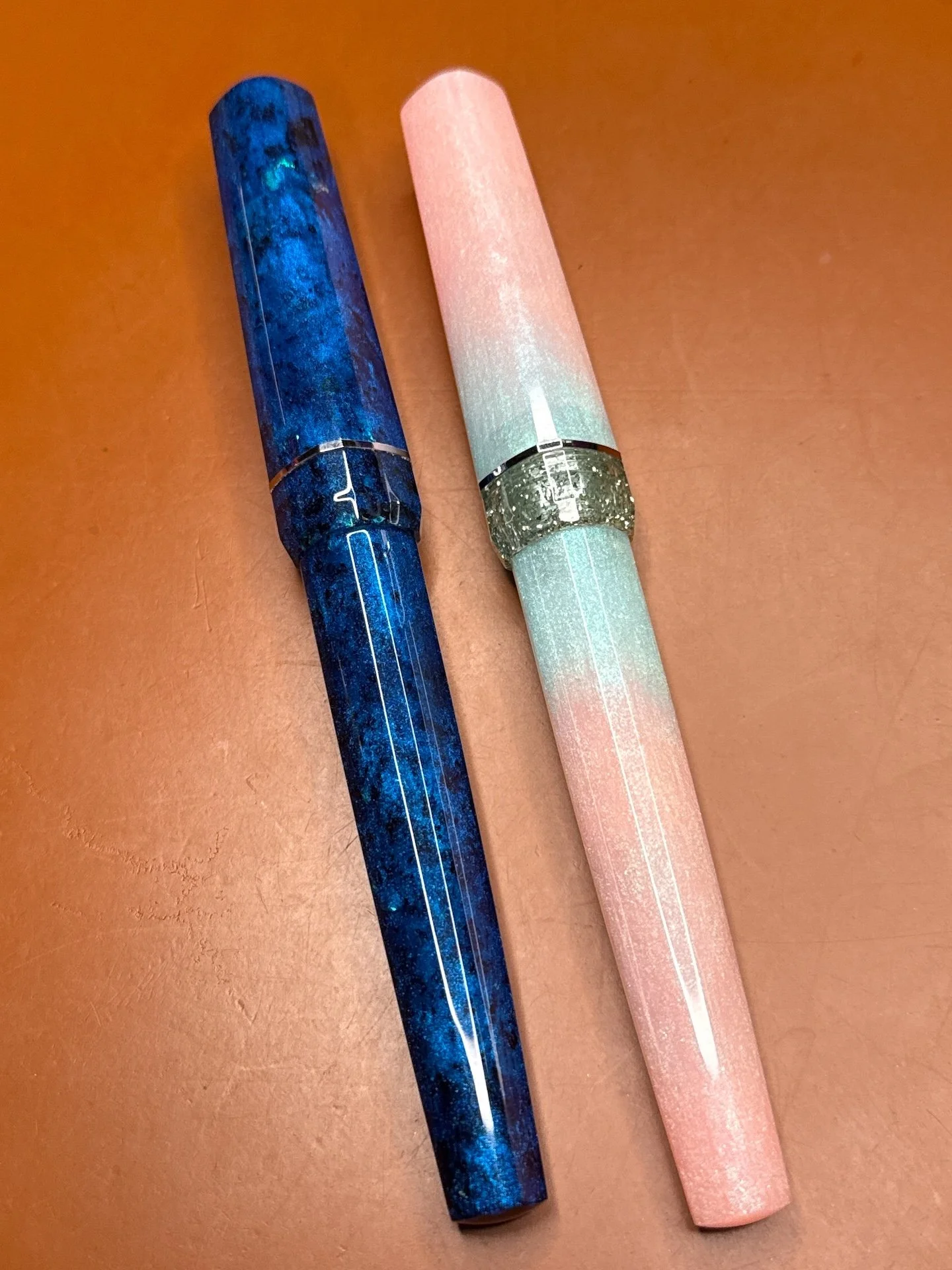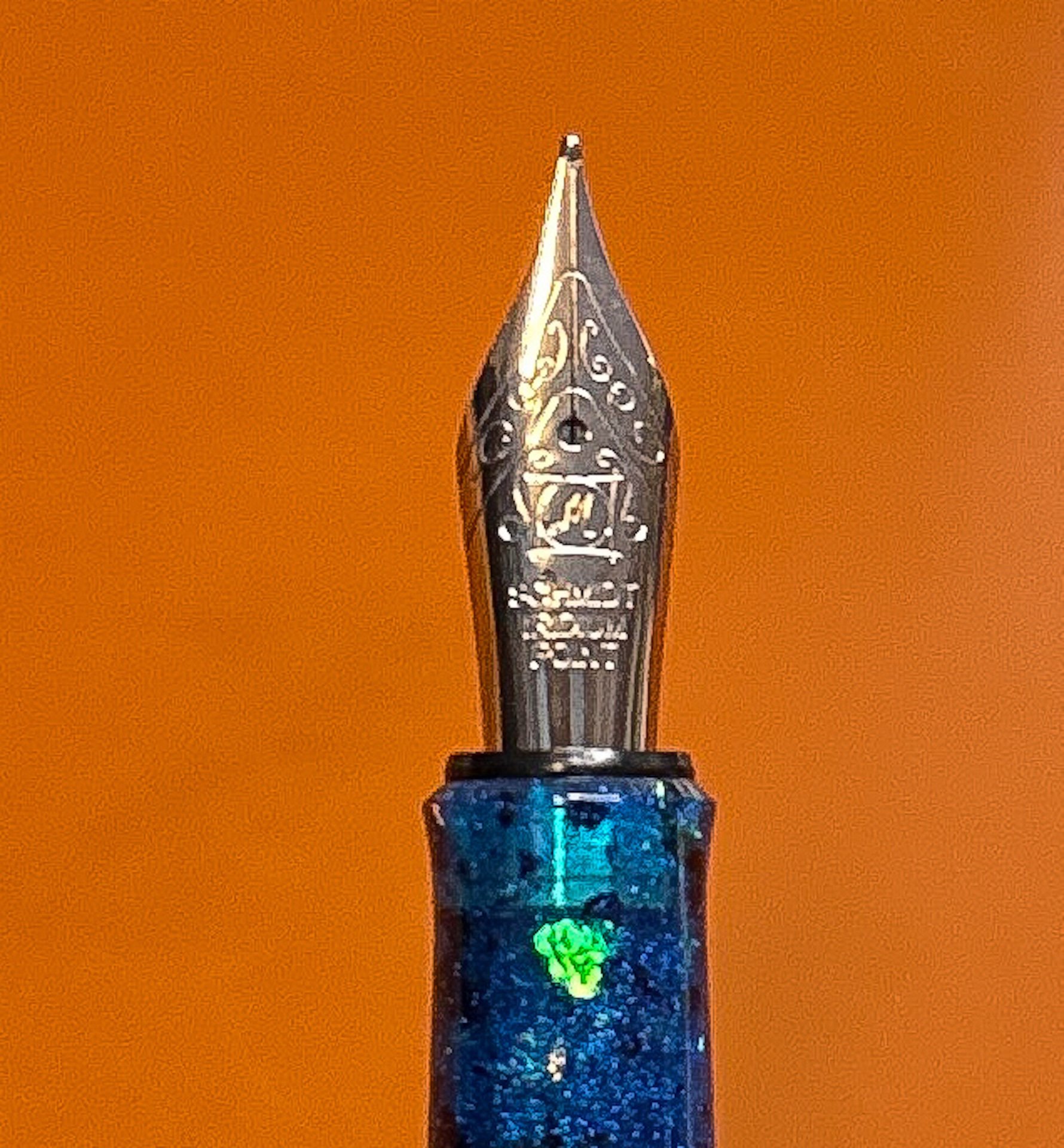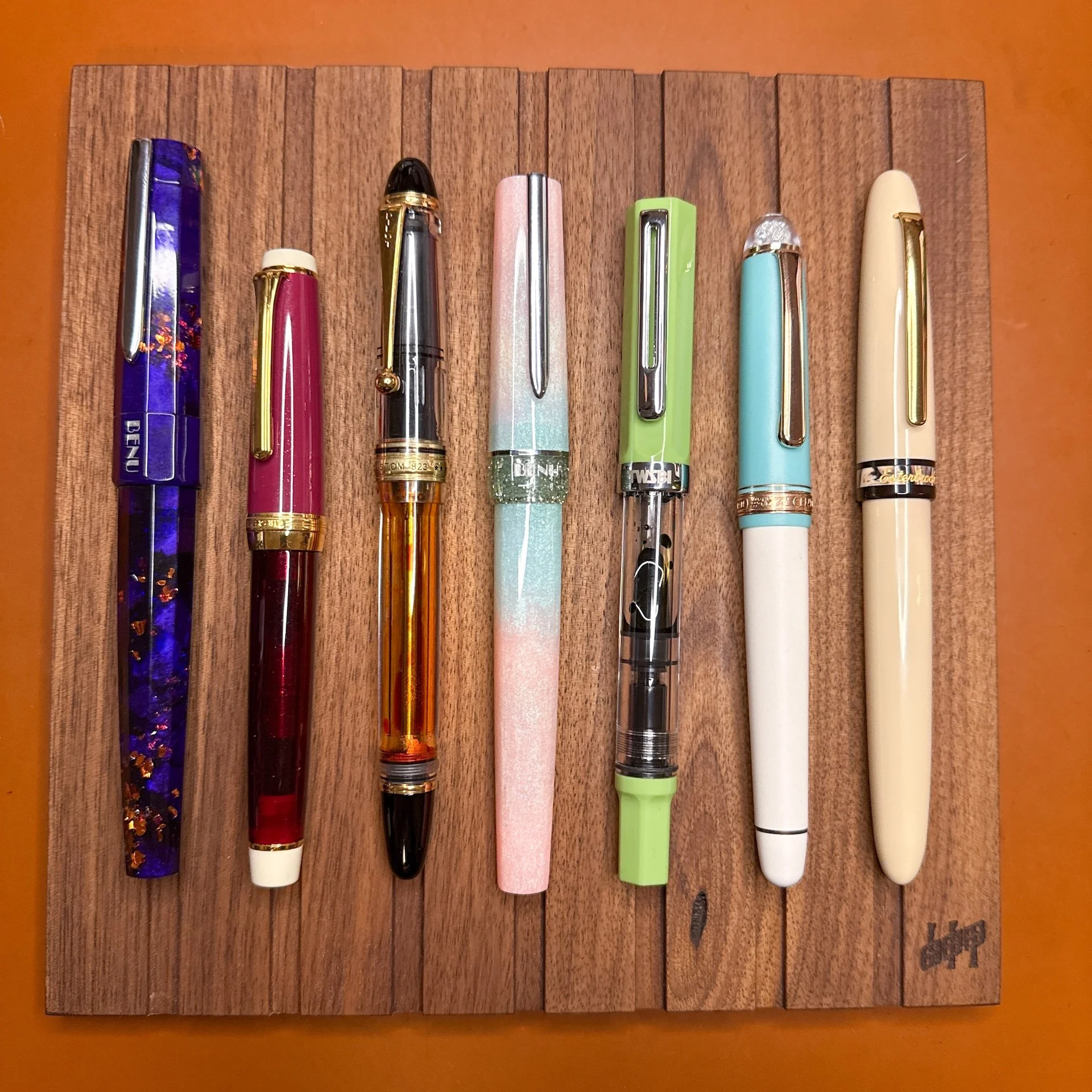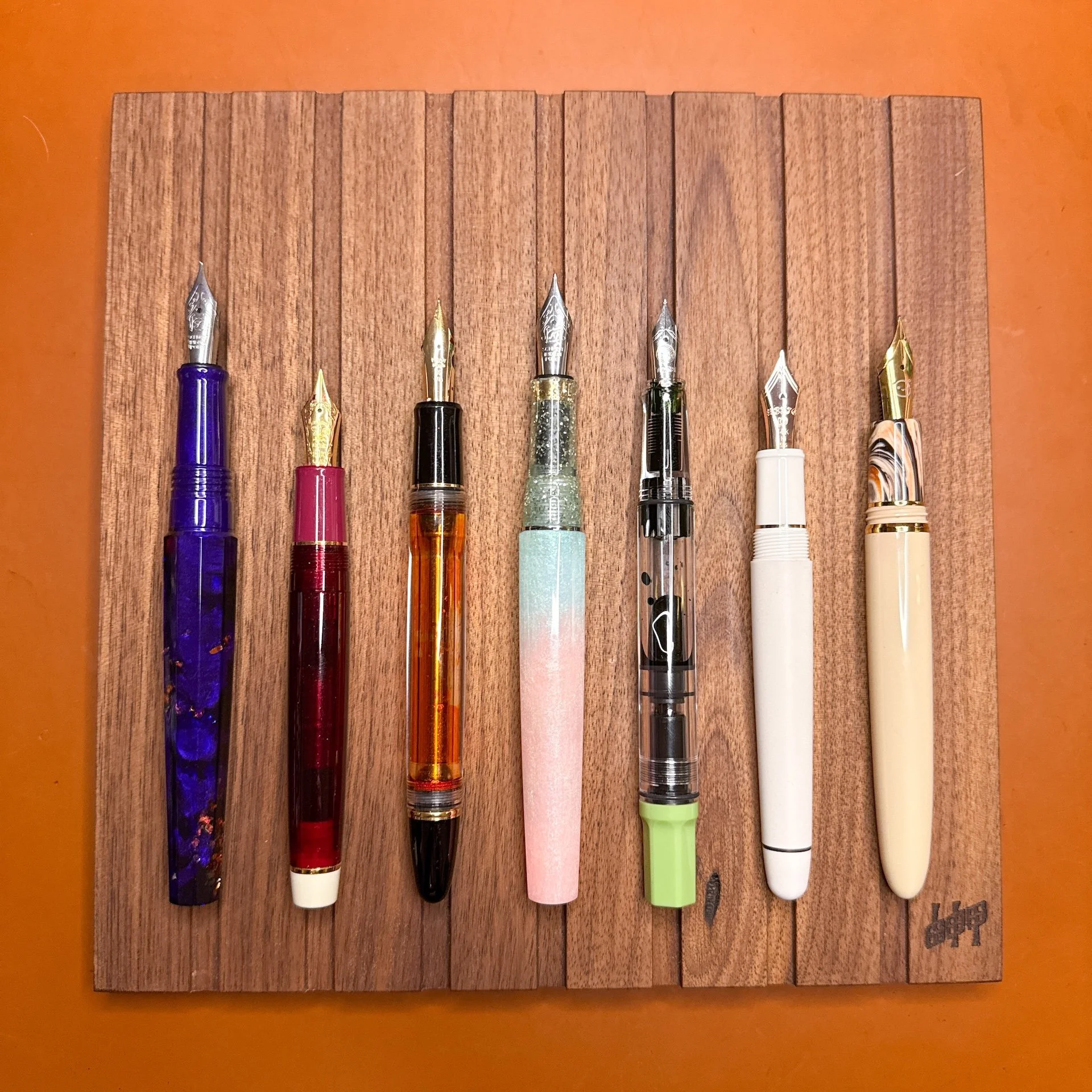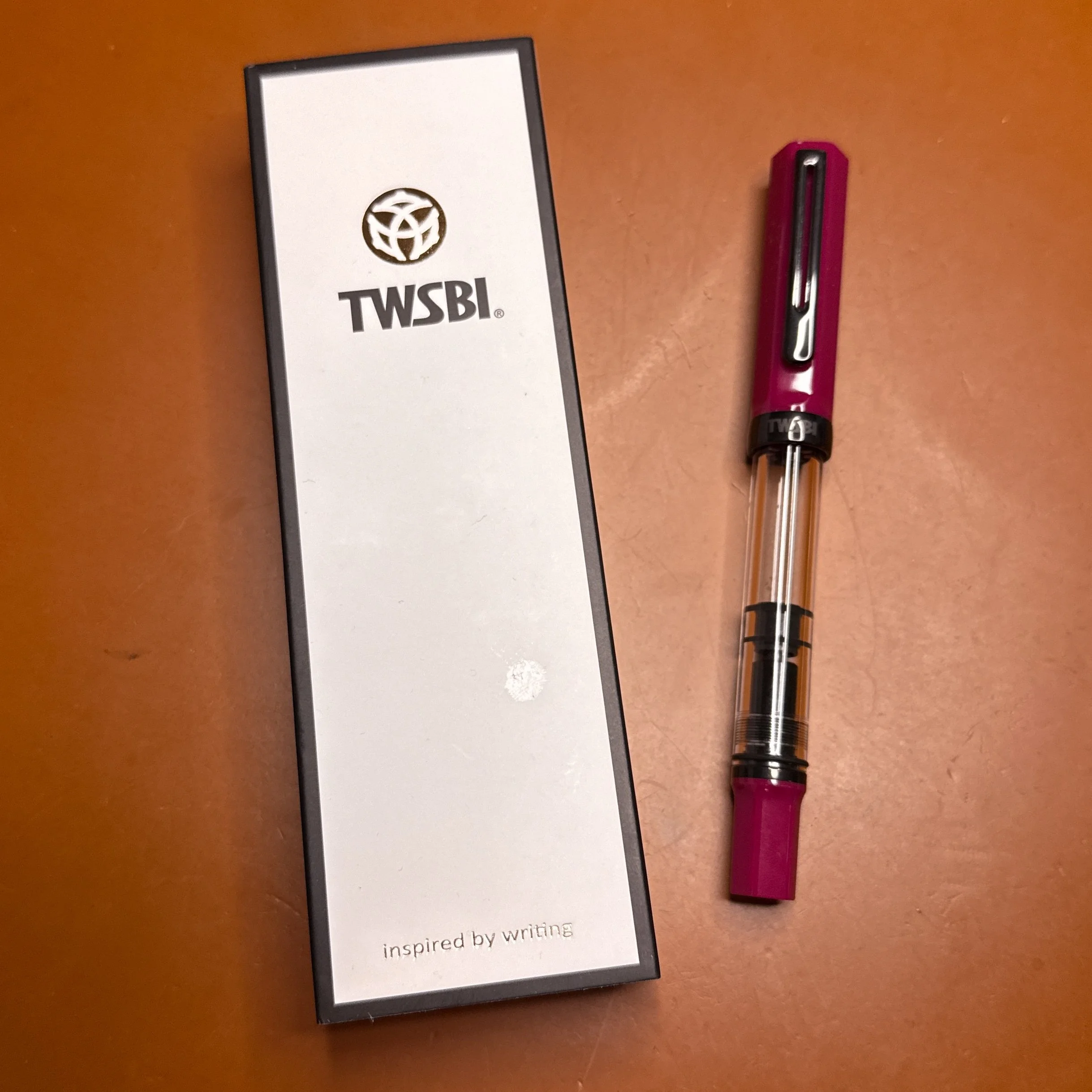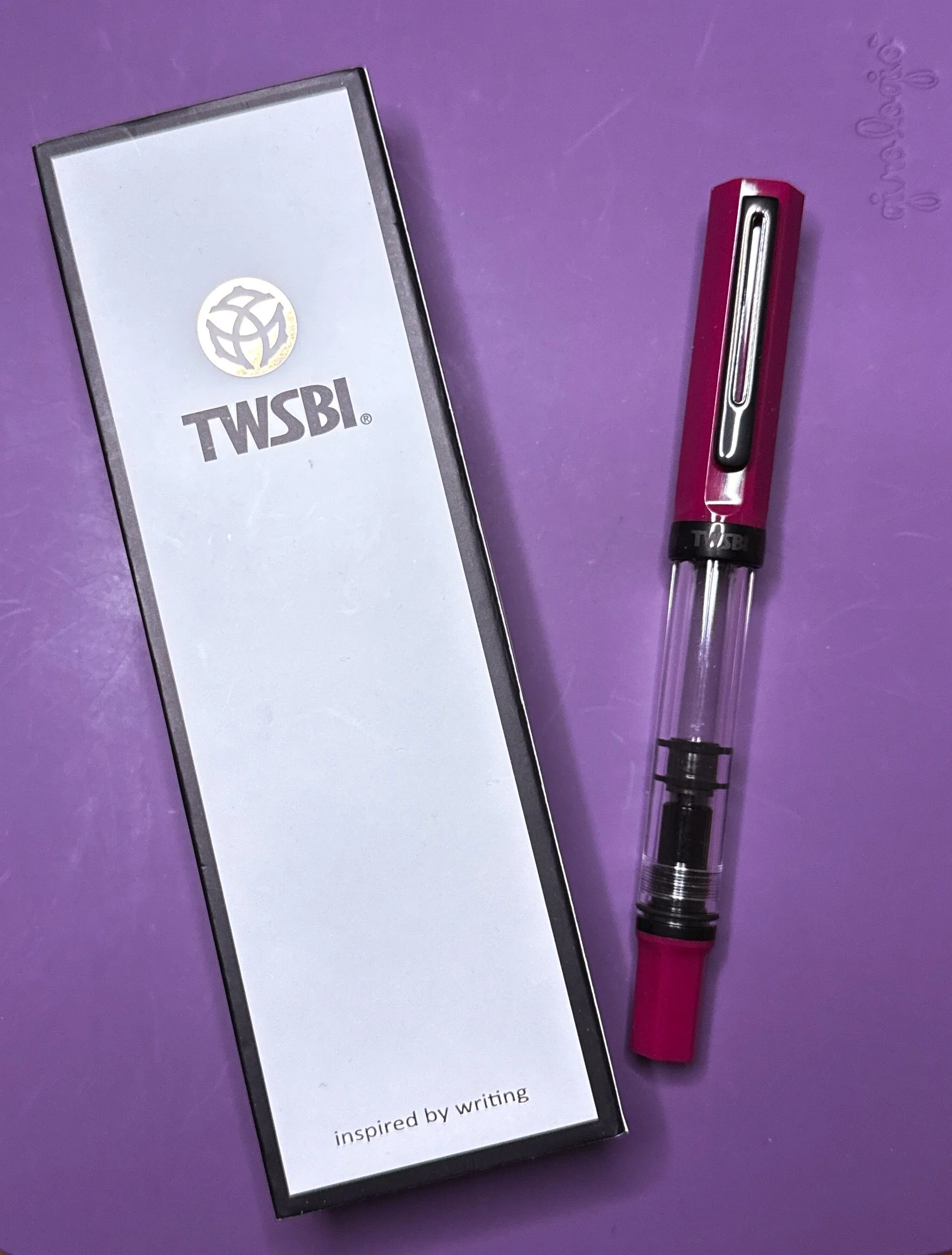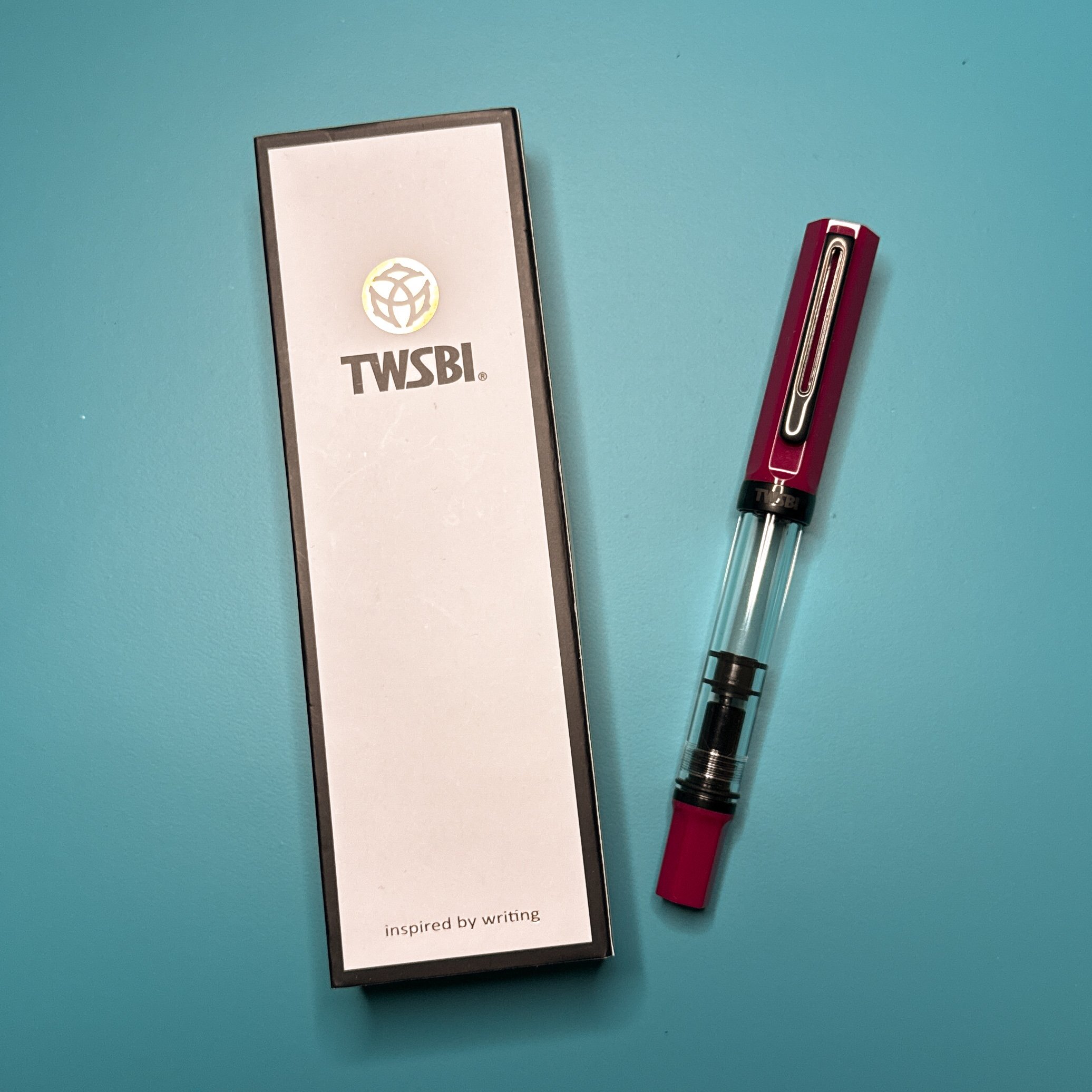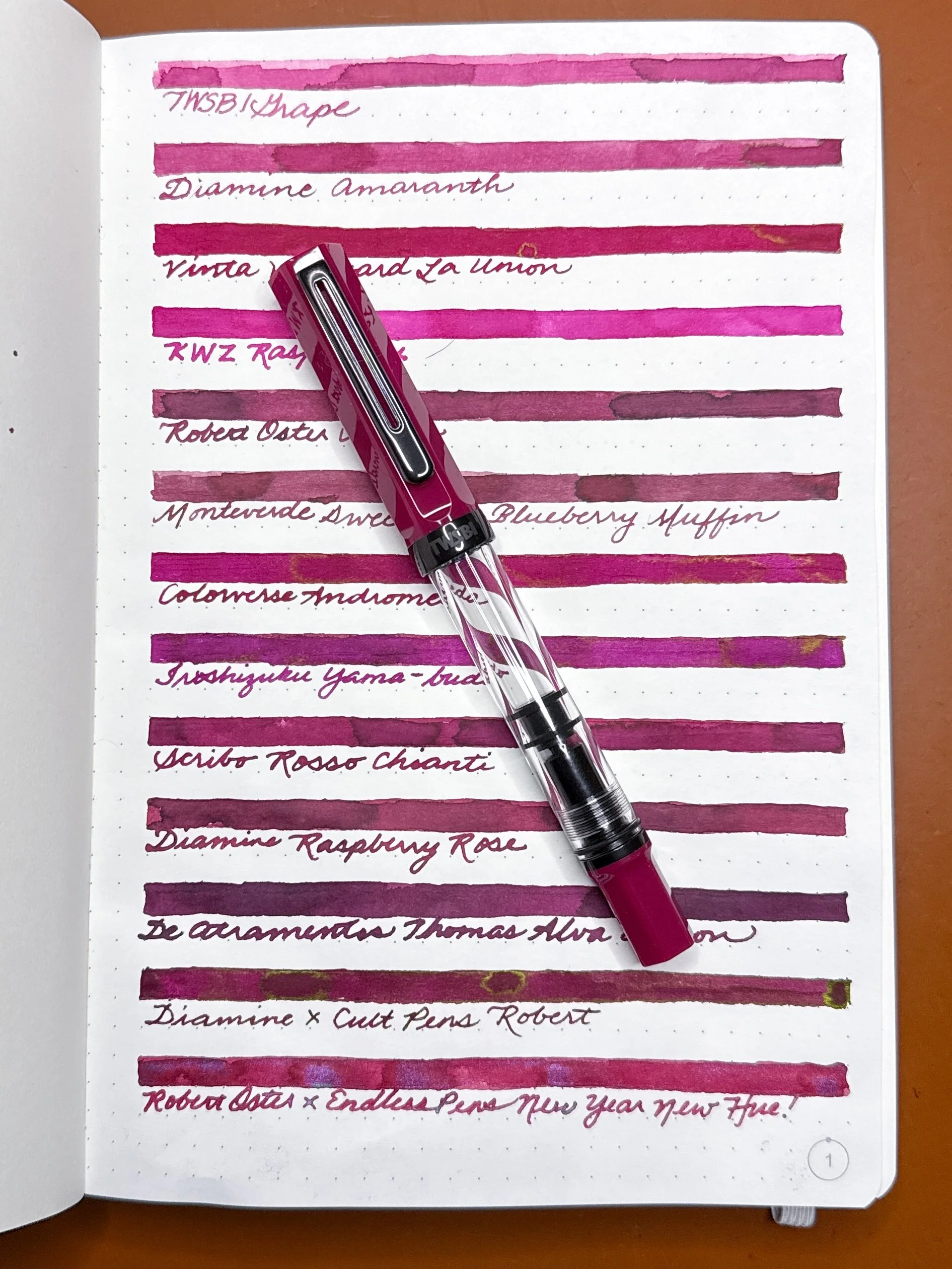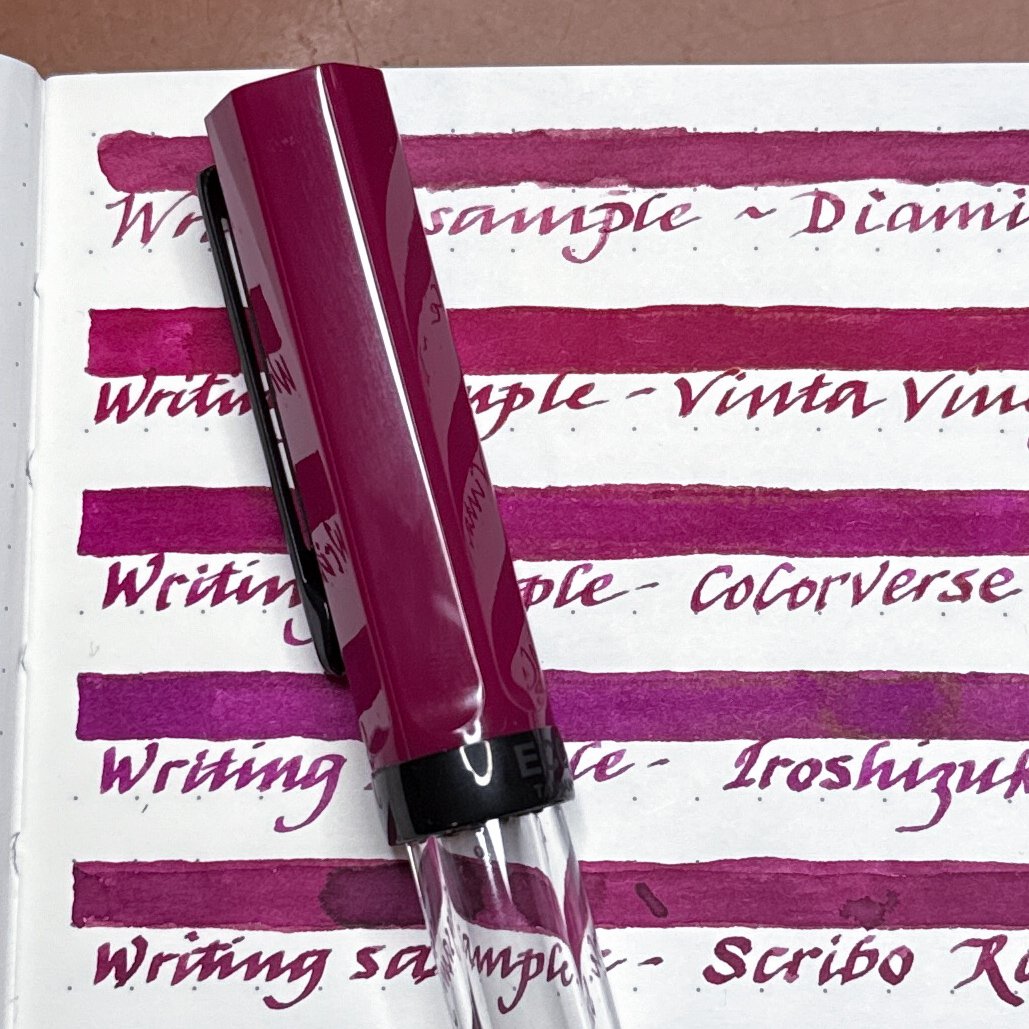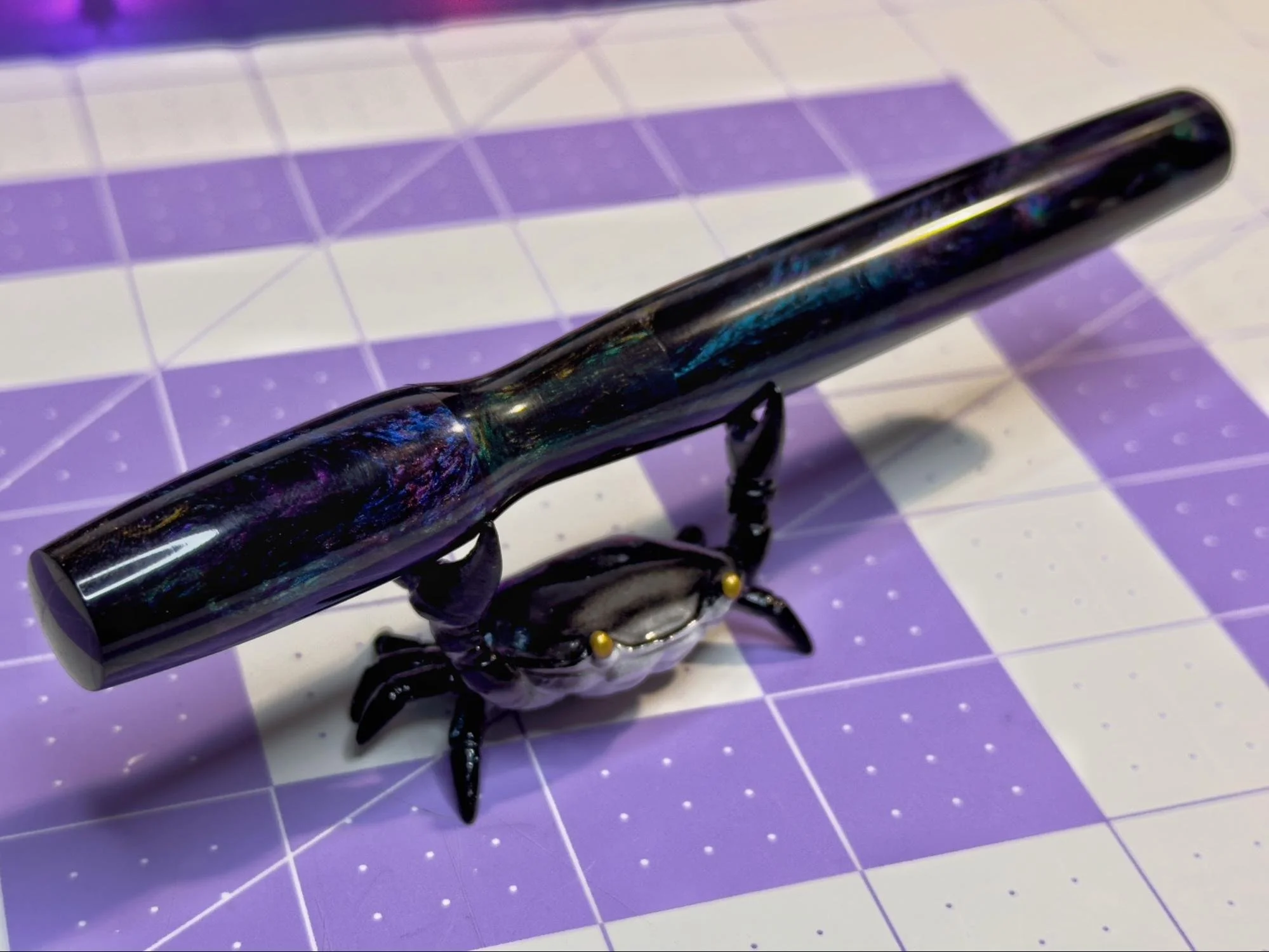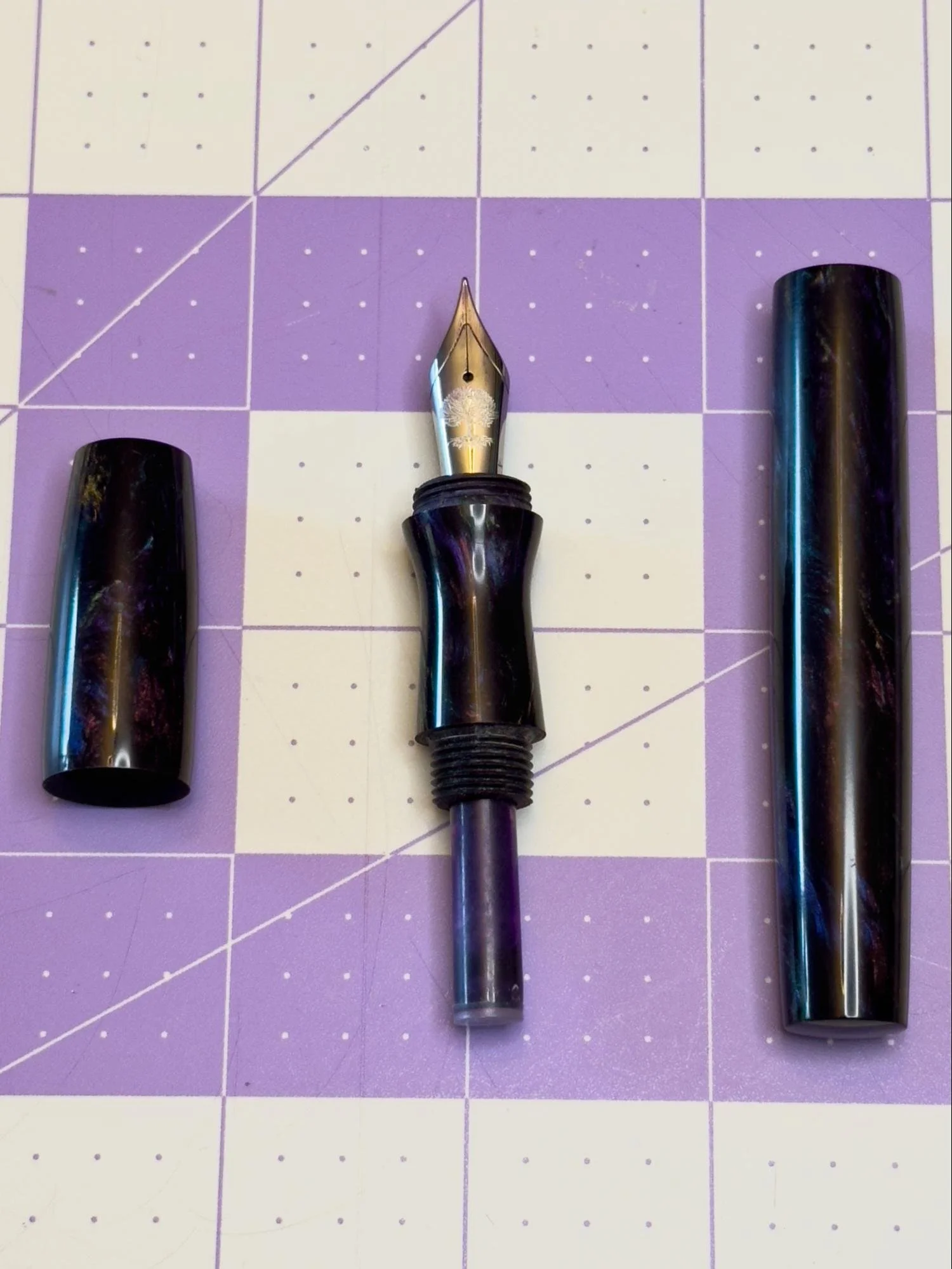(Kimberly (she/her) took the express train down the fountain pen/stationery rabbit hole and doesn't want to be rescued. She can be found on Instagram @allthehobbies because there really are many, many hobbies!.)
A couple months back, Benu announced a new addition to their family of fountain pens - the Haute Collection. This collection “embodies elegance and modern sophistication with its faceted design and striking finishes.” Thank you to Bryce Gillett from Luxury Brands of America for sending these pens for review.
Benu is known for their colorful and sparkly pens, which tend to evoke a squeal with grabby hands or a shudder because it’s “too much”. As I said in my Benu comparison article a couple years ago, they definitely aren’t boring, nor would you confuse them with other brands.
The Haute Collection comes in 10 colorways - Satin, Decadence, Grace, Perle, Lustre, Chic, Lush, Flair, Icon, and Allure. Bryce kindly sent Grace and Perle for review.
Grace (top) and Perle (bottom) from the Benu Haute Collection.
Each of the colorways of the Haute Collection are unique and offer not just different colors but also different levels of sparkle and mixes of colors. Grace, for example, has blue with bits of turquoise sparkly flakes. It also has subtle bits of black mixed into the blue resin.
Benu Grace.
The black flecks in the blue resin gives it a nice depth.
Contrast this with Perle which is a primarily pink pen with a light blue gradient in the middle, and very fine light blue shimmer throughout the resin. The cap band and grip section is clear with silver flakes.
Benu Perle.
Sparkly ombre light pink to light blue in the center, along with a clear with silver flakes in the cap band and grip. Note that the nib unit’s top band is gold-toned - the distinction is visible in person but isn’t super clashy due to the silver flecks in the grip.
Unlike the Euphoria, which has 11 facets on the barrel and cap, the Haute Collection pens have four “main” facets and subtle, smooth, thinner facets that connect the main facets.
The Haute Collection (left) and Euphoria caps - you can see the more square profile of the Haute versus the Euphoria.
The reflection is from the slim facets.
Schmidt puts the nib sizes in the little square - both of these pens have Medium nibs, as indicated by the script M in the middle of the square. If your Benu nib doesn’t have this design, it is likely a Jowo nib, which has the size on the side of the nib.
The Haute Collection is similar in size to the Benu Euphoria with a slimmer cap and barrel. The grips are similar in size.
Comparison pens capped (left to right): Benu Euphoria, Sailor Pro Gear, Pilot Custom 823, Benu Haute Perle, TWSBI Eco, Platinum 3776, Esterbrook Estie.
The Benu Haute Collection pens are packaged in a Benu-branded white box with an inner paper pen “pouch”, warranty information and a long standard international cartridge (pretty rare to find long carts!). The included Schmidt K2 standard international converter (no metal on the tip end) is already installed in the pen. The Haute Collection is available with a steel #6 nib - Fine, Medium, Broad, Flex Fine, Stub 1.1, and Stub 1.5 (the latter 3 are Jowo and not Schmidt).
Writing samples of the Fine, Medium, Broad Schmidt nibs, along with others for comparison. From the Benu comparison article.
The Haute Collection pens retail for $210-252 and can be found at authorized Benu dealers including Dromgoole’s and Goldspot.
(Disclaimer: The Benu Haute Collection pens were sent for review by Luxury Brands of America. All other pens are my own, including the Benu x TPA Euphoria.)
Enjoy reading The Pen Addict? Then consider becoming a member to receive additional weekly content, giveaways, and discounts in The Pen Addict shop. Plus, you support me and the site directly, for which I am very grateful.
Membership starts at just $5/month, with a discounted annual option available. To find out more about membership click here and join us!




